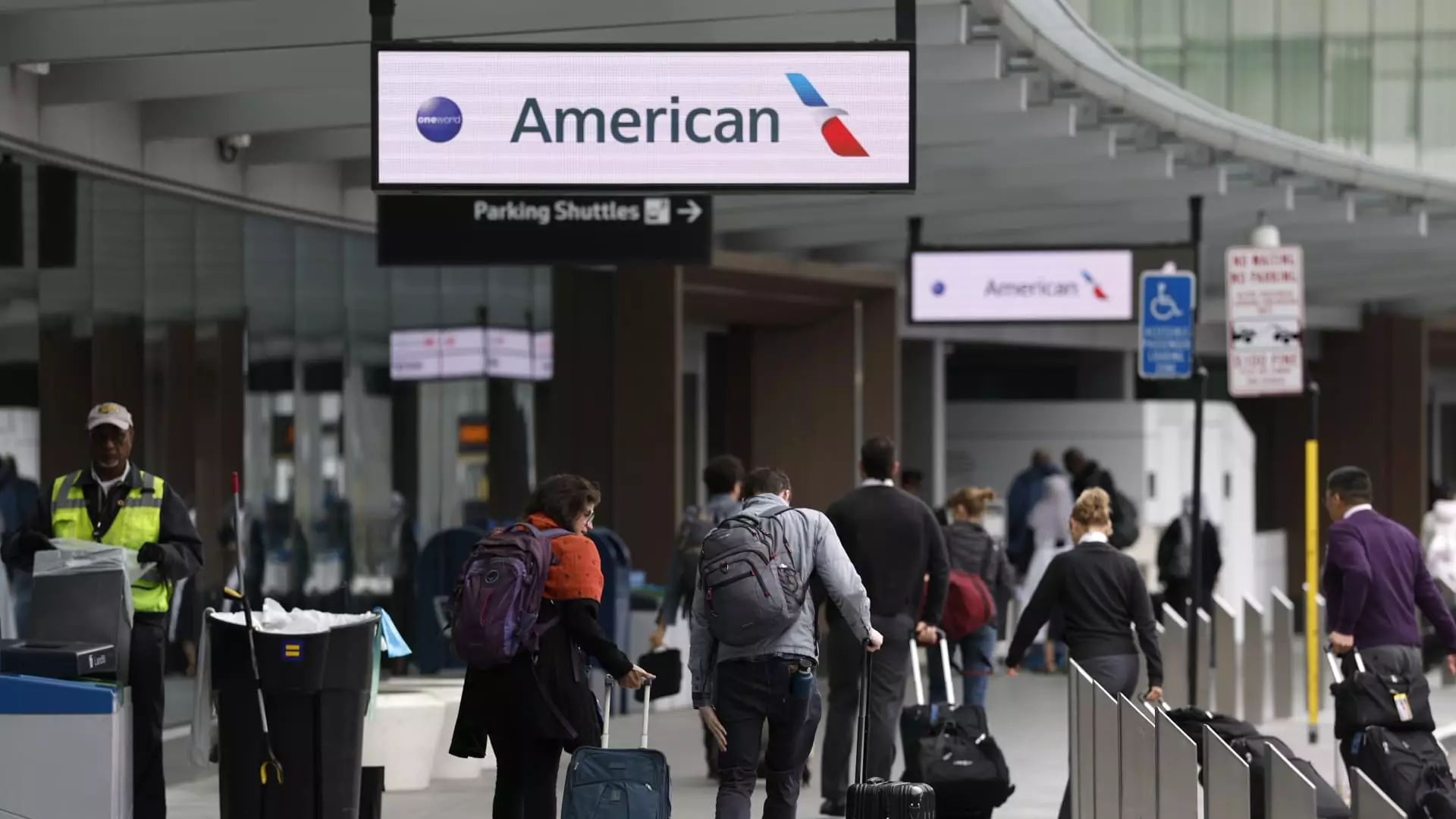As we venture into 2025, a troubling narrative emerges from the successive announcements by airline CEOs who express a profound concern about the state of the travel industry. Their apprehensions highlight a fundamental issue of economic uncertainty that seems to overshadow their optimistic projections for the year. Although airlines initially set buoyant expectations for domestic travel demand, practical observations reveal that consumer interest is waning. Citing the effect of evolving market dynamics, tariff policy turbulence under former President Trump, and broader economic unpredictability, the executives’ voice a resonance of distress—a reflection, perhaps, of a looming recession.
Growing Discontent Among Consumers
Consumer psychology plays a significant role in shaping travel habits, especially when it comes to luxury expenditures such as vacations. As illustrated by Robert Isom, CEO of American Airlines, the specter of uncertainty can swiftly undermine any desire to plan leisure travel that requires significant financial outlay. This notion falls squarely within the parameters of what behavioral economists term “defensive spending.” Families hold back their hard-earned money amidst worries about future job security, financial stability, and fluctuating market conditions. The result? A collective slowing down of purchasing decisions—particularly for discretionary items—and a potential downturn in an industry that heavily relies on consumer confidence.
Capacity Crunch: An Industry Predicament
The consequences of diminished travel demand are clear: the airlines find themselves grappling with an overabundance of capacity, which compels them to curtail their growth plans. Notable industry giants—Delta, Southwest, and United—respond to declining forecasts by pulling back on their flight offerings, even as they hope for a resurgence in travel during peak seasons like summer. This situation reflects an alarming economic model where supply outstrips demand, forcing airlines to offer reduced airfares to fill vacant seats. According to the Bureau of Labor Statistics, airfares have plummeted by 5.3% year-on-year, underscoring the pressure on airlines to balance supply and demand effectively.
Corporate Travel: A Significant Dependency
Another critical facet of this economic malaise is the stagnation of corporate travel. This segment has always provided a more lucrative revenue source for airlines due to the less price-sensitive nature of business travelers who often make last-minute bookings. Conor Cunningham, a travel analyst at Melius Research, aptly identifies this group as a canary in the coal mine; should corporate budgets tighten in response to uncertainty, the repercussions for airline profits could be severe. Although Delta’s CEO indicated that corporate travel had been growing at a steady 10% annually, that growth appears to have plateaued—sparking fears of a broader downturn.
The Ripple Effects of Government Spending Cuts
Adding another layer of complexity to the situation is the decline in government-related travel, exacerbated by policy decisions coming out of the previous administration. This environment of increased austerity and layoffs not only diminishes the volume of flying but also signals a significant policy shift that could inhibit long-term growth in the sector. This dynamic serves to underline the interconnectedness of various tourism-related sectors and their vulnerability to governmental fiscal policies.
What Lies Ahead? Hope on the Horizon
Despite the dismal forecasts and threats from various quarters of economic unpredictability, it’s essential to consider that some pockets within the travel industry are still thriving. Executive comments reveal staying strength in leisure travel, particularly for international flights, where American travelers continue to pursue overseas adventures in considerable numbers. This hints at a bifurcated market where certain demographics may prioritize travel while others retreat due to tightening household budgets.
Ultimately, while the airline industry navigates a precarious landscape marked by unpredictability and financial strain, the sentiments conveyed by CEOs underscore a critical need for coherence and stability in economic policymaking. As they anticipate a future guided by definitive assurance, we find ourselves grappling with the collection of choices that will delineate the foreseeable trajectory of both the airlines and the broader economy as we progress through 2025.

